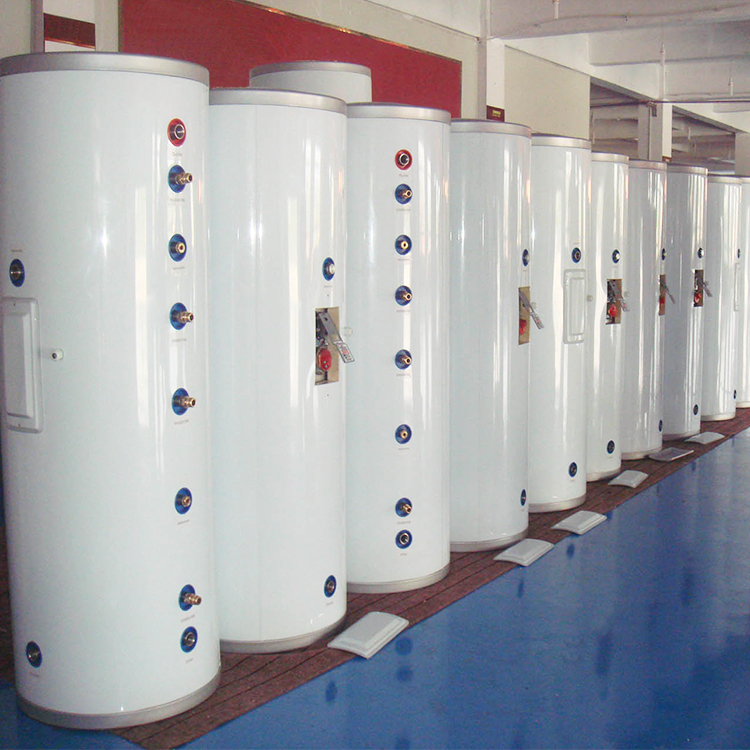Views: 17 Author: Site Editor Publish Time: 2022-06-17 Origin: Site

Nowadays, with the integration of solar water heaters and residential buildings, split solar water heaters are popular. Among them, how to choose a solar water tank is also an important step in purchasing a split solar water heater. Because each household's usage or requirements for heating projects vary, there are different judgments and choices. Then, let's take a look at the classification and selection of solar water tanks in split solar water heaters.
The classification of solar water tanks
The split solar water storage tank is divided into pressurized solar water tank and non-pressurized solar water tank. Choose the right tank type according to the requirements of different groups of people and use.
1, Split pressurized solar water tank
The reason why the pressurized type water tank is under pressure is because the water tank is closed and the hot water discharge pressure is high.
The tank capacity is available from 150L to 2000L, and depending on the application, a different number of copper coils (heat exchangers) can be placed in the tank. Of course, no need copper coils can also be used in areas with good water quality.
2,Split non-pressurized solar water tank
The non-pressurized water tank is an open water tank that is not subjected to pressure, so the pressure of the water discharge is determined by the height difference between the installation height of the solar water tank and the water outlet. The higher the tank installation height, the greater the effluent pressure.
Its capacity is available from 1000L to 15000L. It can be used as a hot water storage device for large and medium-sized solar central heating systems, solar heating systems, electric or gas heating systems.
How to choose a split pressurized water tank and a split non-pressurized water tank?
1,Select the type of water tank based on the number of users or demand to select the tank.
Generally, the pressurized water tank has a choice of 150L-2000L, and the non-pressurized water tank has 1000L-15000L. It can be seen from the capacity of the water tank that the pressurized water tank is suitable for household or small heating systems, and the non-pressurized water tank is suitable for large and medium-sized heating systems, such as hotel water, hospital hot water, factories, schools, and the like.
2,Different numbers of copper coils (heat exchangers) can be set in the water tank according to different purposes.
Usually, one copper coil is mainly used to heat the water in the solar water tank, and the two copper coils are mainly used for heating the floor heating or the auxiliary heating equipment such as gas.
In the large and medium-sized (1000L-3000L) solar heating project, one coil can be added to the non-pressurized water tank, so that the non-pressurized water tank is supplied with the same pressure as the pressurized water tank.
3, Heating floor heating, swimming pool or combined with auxiliary heating equipment.
If you need to heat the floor heating, swimming pool or auxiliary heating equipment such as gas, you can choose the water tank with 2 coils.
If no heat exchanger (coil) is provided inside the tank, a plate heat exchanger can also be used for the solar heating system.
4, From the perspective of cost
Non-pressured water tanks cost less than pressurized water tanks, so large and medium-sized solar heating systems typically use non-pressured solar water tanks, two copper coils in the tank, or a plate heat exchanger in the system. In this way, the same water pressure as the pressurized water tank can be achieved while reducing the cost, giving the user the best experience of water use.
From the above, we can understand that it is necessary to select the appropriate tank type according to the actual situation. Generally, when the tank capacity is greater than 1000L, it is recommended to use non-pressurized solar tank. When the tank capacity is less than 1000L, the pressurized tank can be selected. This depends mainly on the user's requirements for hot water supply pressure and cost. On the one hand, it is necessary to choose according to the needs of actual use, on the other hand, it should be selected in combination with the manufacturing process and characteristics of the water tank. More important is to save more cost for the family.